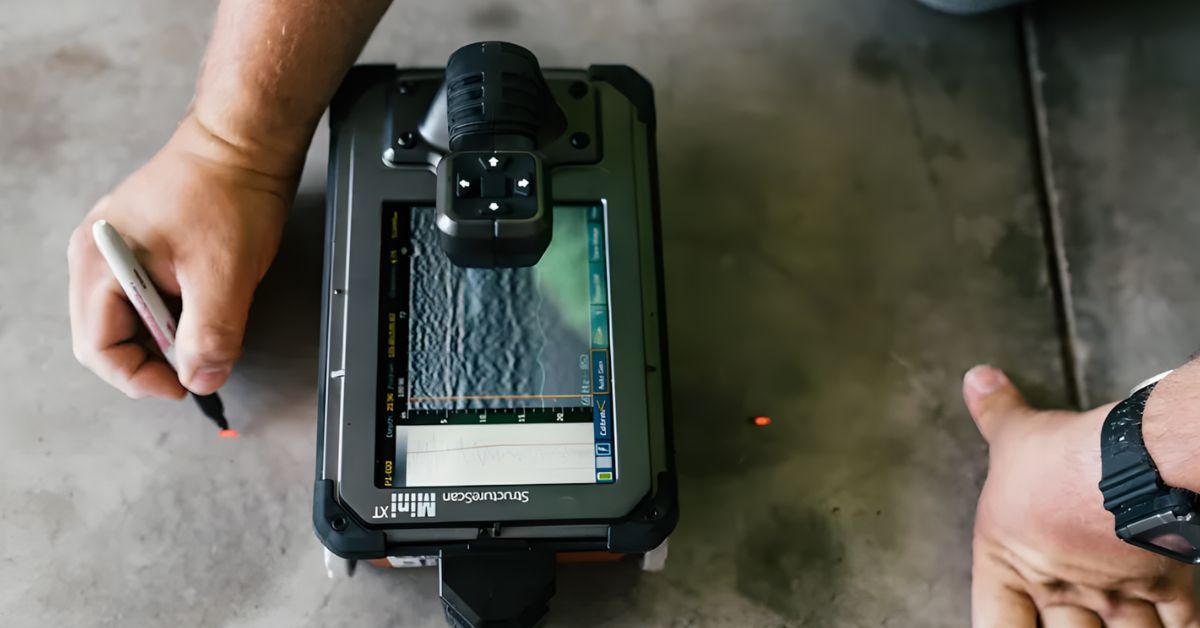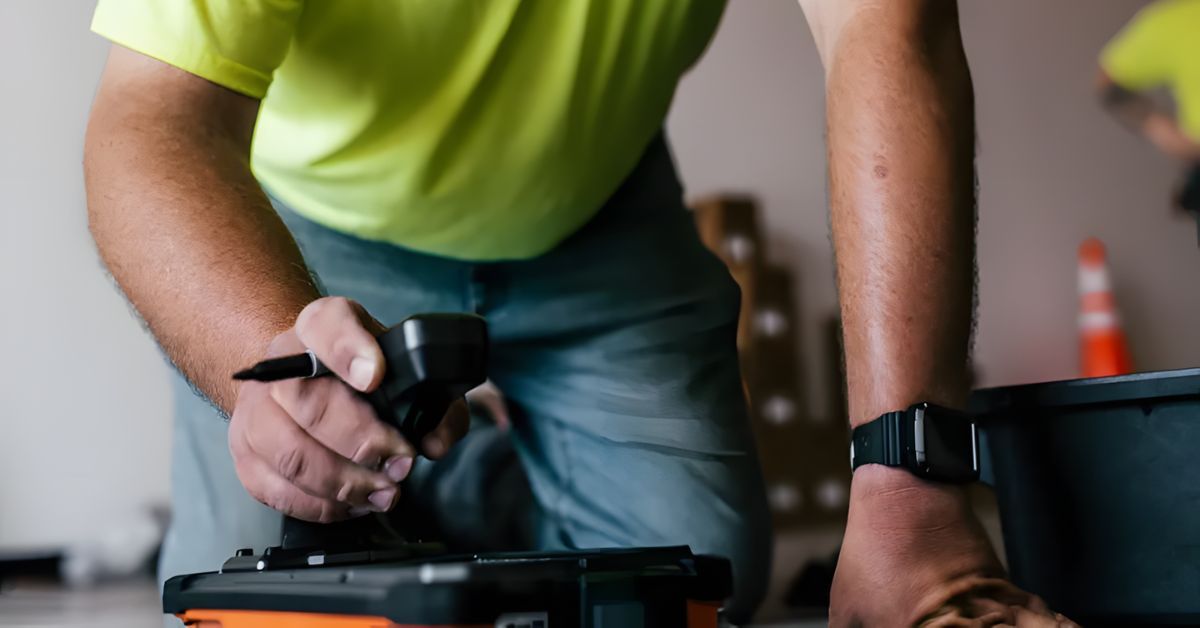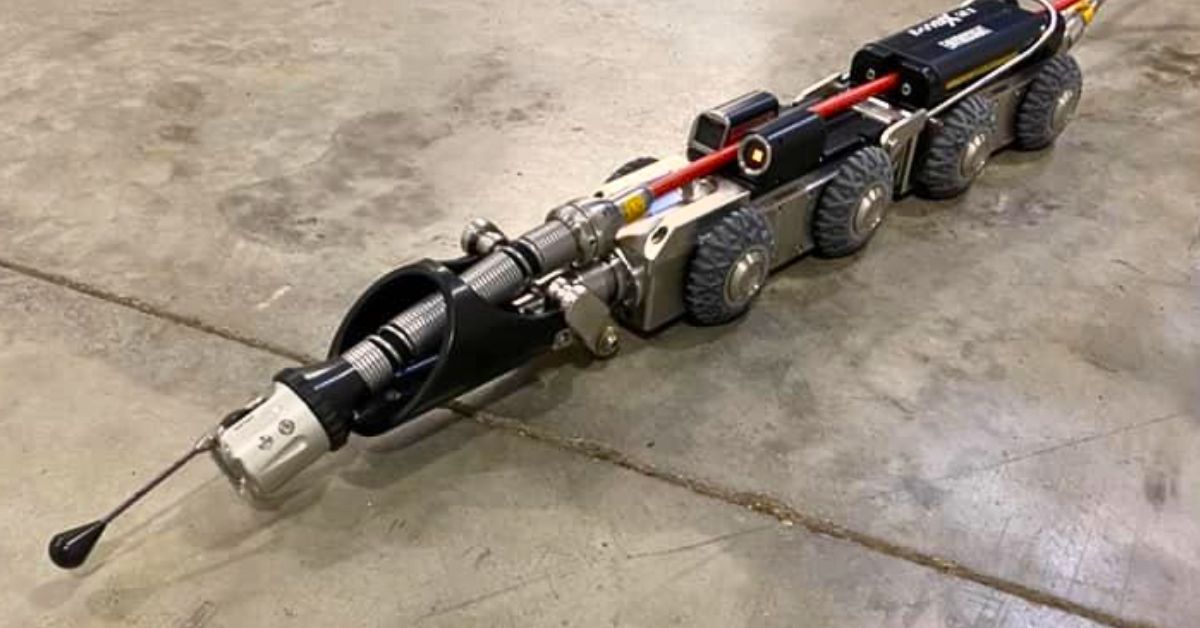
Construction and engineering professionals face challenges when working with existing concrete structures, particularly in determining what lies beneath the surface. Concrete scanning technology offers precise, non-destructive solutions to uncover hidden elements, preventing costly mistakes and improving project safety.
In our complete guide to concrete scanning, we'll explain everything managers and workers need to know, from how the technology works to what it can detect. Keep reading to understand the basics and benefits of concrete scanning technology.
What Is Concrete Scanning?
Concrete scanning is a non-destructive testing method that uses Ground Penetrating Radar (GPR) to create precise images of subsurface conditions in concrete structures. By transmitting electromagnetic waves and analyzing the reflected signals, this technique identifies embedded objects, voids, and structural variations. Using real-time data, it generates a map for the location, depth, and size of various elements within the concrete, providing critical insights for safe construction and renovation.
Professional concrete scanning utilizes advanced equipment that trained technicians operate to accurately interpret the data and differentiate between materials. This process causes no damage to existing structures, making it an ideal solution for obtaining precise subsurface information without disruption.
How Does Concrete Scanning Work?
GPR technology is essential for concrete scanning, using high-frequency electromagnetic pulses to detect subsurface materials. As these signals pass through the concrete and return to the surface, different materials reflect them at varying rates, creating distinct patterns that the technicians then interpret. By moving the scanning equipment across concrete surfaces, the machine continuously transmits and receives electromagnetic signals.
Advanced software processes these signals in real-time, generating visual representations of subsurface conditions. Technicians analyze these images to locate specific materials with high precision. Modern GPR systems provide accuracy within one-quarter inch for object location and maintain depth measurements within 10-15 percent of actual positions, providing reliable data for construction planning and execution.

Why You Need Concrete Scanning for Your Project
When you're working with concrete, whether you're demolishing it or modifying it, you must know what is within before beginning the work. Concrete scanning can save your project money, ensure a safe project, and preserve the structural integrity of the concrete.
Cost Savings
Concrete scanning technology helps save costs by preventing damage to embedded utilities and structural elements. Projects using scanning services avoid expensive repairs, utility relocations, and delays that accidental strikes cause.
Confirm Safe Working Conditions
Safety is another major advantage of concrete scanning. The technology eliminates unexpected surprises that could endanger workers or compromise the structural integrity of a project. With accurate subsurface information, project teams can confidently execute their work plans.
Preservation of Structural Integrity
Scanning services help protect structural integrity by identifying critical elements that workers cannot disturb with excavation or demolition. This allows construction teams to adjust their methods without compromising the performance of existing concrete structures.
Non-Destructive and Efficient
The non-destructive nature of concrete scanning eliminates the need for exploratory demolition or investigative drilling. By providing comprehensive subsurface information from the start, projects can proceed more efficiently and with fewer interruptions.
What Concrete Scanning Can Find Beneath the Surface
Now that we understand what concrete scanning is and its benefits, what can it detect? Our complete guide explains what concrete scanning services can find within concrete structures.
Rebar
Concrete scanning can easily detect reinforced steel—also known as rebar, one of the most common hazards found in concrete—due to its distinctive electromagnetic signatures. This allows technicians to identify individual bars, determine their orientation, and map spacing patterns within concrete structures. Scanning can accurately locate standard rebar, mesh patterns, and multi-layered configurations, which is critical for projects requiring precise core drilling or cutting.
The technology can also distinguish between different rebar sizes and detect variations in steel density. This valuable data helps construction teams identify the best locations for drilling and cutting, minimizing risks and ensuring efficient, complication-free operations.

Post-Tension Cables
Post-tension cable systems pose serious safety risks if someone were to sever them during construction. Concrete scanning technology is highly effective at detecting these high-tension cables, which appear as distinct linear features in GPR data. The scanning process identifies both bonded and unbonded cables, mapping their paths through concrete structures and highlighting areas where they concentrate or change direction. This prevents accidents that could cause cable failure and structural damage.
Skilled technicians can distinguish post-tension cables from other materials depending on their unique signal patterns and typical layouts. Their expertise verifies accurate detection and proper marking of these critical structural components, enhancing safety and precision during construction operations.
Conduits (Electrical and Communications)
Another thing that workers must consider when repairing or drilling into concrete is an electrical conduit or communication line. These conduits and lines emit distinct electromagnetic signatures during concrete scanning operations. This technology can detect both metallic and non-metallic conduit systems, though metallic conduits generate stronger signal reflections. Concrete scanning allows for the mapping of conduit routes, junction boxes, and areas where conduits converge or separate. This mapping can provide crucial information for renovation projects that need to modify existing electrical or communication systems without disrupting active circuits.
The scanning process can also identify conduit sizes and differentiate between various types of electrical installations. This allows project teams to plan activities more effectively, ensuring minimal interference with critical building systems and reducing the risk of costly errors during construction or renovations.
Pipes (Water, Gas, and Sewer)
Utility pipes embedded in concrete create unique electromagnetic reflections that concrete scanning technology can easily detect. This system identifies various pipe materials, such as metal, plastic, and ceramic—although detection characteristics differ based on the pipe's composition and contents. Water-filled pipes, for instance, produce particularly strong signals, making them easy to locate during scans. Gas lines and sewer pipes, on the other hand, generate distinct signature patterns that trained technicians can accurately interpret.
Concrete scanning technology provides detailed information about pipe diameters, routes, and connection points, offering a comprehensive view of utility systems within the structure. This data prevents accidental damage to infrastructure during construction, enabling operations to proceed safely and efficiently.
Voids and Thickness
Concrete scanning is also highly effective at detecting air voids, delamination areas, and thickness variations within concrete structures. Voids present distinctive signal patterns, which can point to potential structural weaknesses or construction defects. The technology also accurately measures slab thickness, pinpointing areas where the concrete depth deviates from design specifications.
Delamination detection identifies areas with concrete layer separation, which signals potential maintenance needs or structural issues. Catching these problems early allows for proactive repair strategies.
Mason Private Locating's Services for Scanning Concrete
Concrete scanning technology revolutionizes construction planning by accurately revealing subsurface conditions. By detecting rebar, post-tension cables, utilities, and structural anomalies, scanning services help prevent costly mistakes, enhance safety, and protect structural integrity. This insight allows construction teams to work confidently, knowing their plans account for hidden conditions.
Investing in professional concrete scanning reduces risk, boosts safety, and improves project efficiency. Contact Mason Private Locating today to learn how our expert scanning services can support your next construction project.













